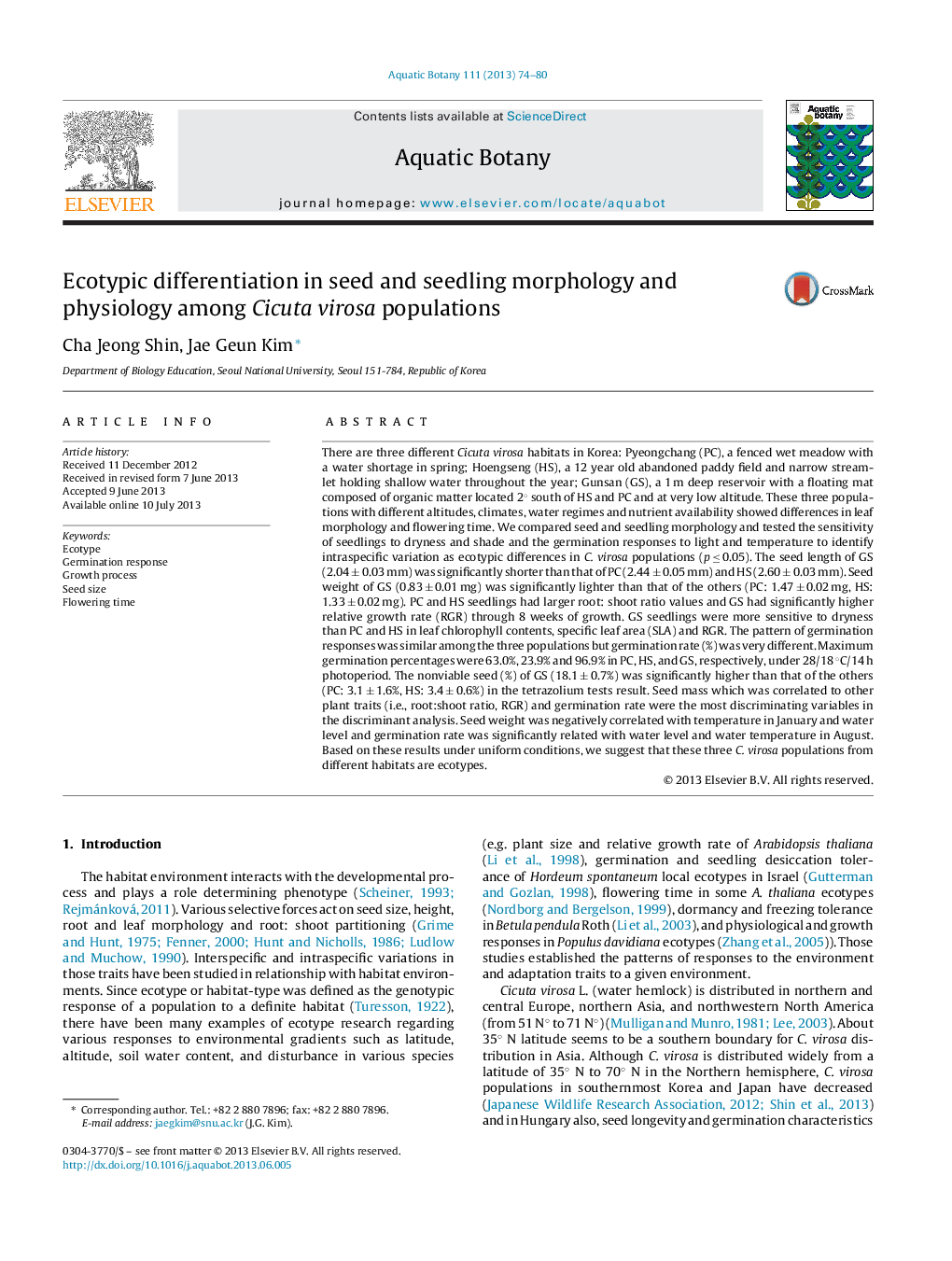| کد مقاله | کد نشریه | سال انتشار | مقاله انگلیسی | نسخه تمام متن |
|---|---|---|---|---|
| 4527850 | 1625831 | 2013 | 7 صفحه PDF | دانلود رایگان |

• We identified ecotypic differences among three Cicuta virosa populations in Korea.
• Seed weight were the most discriminating trait to identify populations.
• Germination responses and flowering times were also critical to identify populations.
• Morphological and physiological traits were correlated with environmental gradient.
• We suggest the three populations of C. virosa from different habitats are ecotypes.
There are three different Cicuta virosa habitats in Korea: Pyeongchang (PC), a fenced wet meadow with a water shortage in spring; Hoengseng (HS), a 12 year old abandoned paddy field and narrow streamlet holding shallow water throughout the year; Gunsan (GS), a 1 m deep reservoir with a floating mat composed of organic matter located 2° south of HS and PC and at very low altitude. These three populations with different altitudes, climates, water regimes and nutrient availability showed differences in leaf morphology and flowering time. We compared seed and seedling morphology and tested the sensitivity of seedlings to dryness and shade and the germination responses to light and temperature to identify intraspecific variation as ecotypic differences in C. virosa populations (p ≤ 0.05). The seed length of GS (2.04 ± 0.03 mm) was significantly shorter than that of PC (2.44 ± 0.05 mm) and HS (2.60 ± 0.03 mm). Seed weight of GS (0.83 ± 0.01 mg) was significantly lighter than that of the others (PC: 1.47 ± 0.02 mg, HS: 1.33 ± 0.02 mg). PC and HS seedlings had larger root: shoot ratio values and GS had significantly higher relative growth rate (RGR) through 8 weeks of growth. GS seedlings were more sensitive to dryness than PC and HS in leaf chlorophyll contents, specific leaf area (SLA) and RGR. The pattern of germination responses was similar among the three populations but germination rate (%) was very different. Maximum germination percentages were 63.0%, 23.9% and 96.9% in PC, HS, and GS, respectively, under 28/18 °C/14 h photoperiod. The nonviable seed (%) of GS (18.1 ± 0.7%) was significantly higher than that of the others (PC: 3.1 ± 1.6%, HS: 3.4 ± 0.6%) in the tetrazolium tests result. Seed mass which was correlated to other plant traits (i.e., root:shoot ratio, RGR) and germination rate were the most discriminating variables in the discriminant analysis. Seed weight was negatively correlated with temperature in January and water level and germination rate was significantly related with water level and water temperature in August. Based on these results under uniform conditions, we suggest that these three C. virosa populations from different habitats are ecotypes.
Journal: Aquatic Botany - Volume 111, November 2013, Pages 74–80